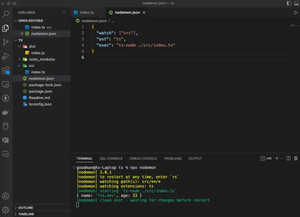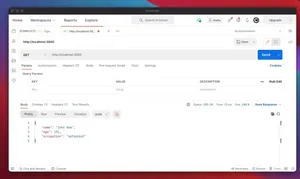Sequelize is a popular Object-Relational Mapping (ORM) library for Node.js, which simplifies the process of working with relational databases. One of its core features is the ability to build complex queries using logical operators such as AND and OR. In this article, we will explore how to effectively use AND and OR operators in Sequelize, aiming to provide you with a clear understanding of their functionality through a series of code examples. Whether you are new to Sequelize or looking to deepen your understanding of query building, this guide will serve as a valuable resource.
Understanding Sequelize Operators
In Sequelize, operators are used to combine multiple conditions in a where clause of a query. The most basic operators are Op.and and Op.or, representing the logical ‘AND’ and ‘OR’ operations respectively. Before Sequelize v5, symbols were used for operators, but in v5 and later, a dedicated Op object is provided by the Sequelize class for better security and readability.
Using the AND operator
The AND operator is used to ensure that all conditions specified must be true for a row to be included in the result set. Here’s the simplest use case:
const { Op } = require('sequelize');
const User = require('./models/user');
async function getUsers() {
const users = await User.findAll({
where: {
firstName: 'John',
lastName: 'Doe',
[Op.and]: [{ age: { [Op.gte]: 30 } }, { isActive: true }]
}
});
return users;
}
In the above example, only users named ‘John Doe’ who are at least 30 years old and active will be retrieved from the database.
Combining AND with OR
Sometimes, you may need to combine both AND and OR operators in a single query to represent more complex logical conditions. Here’s how you can achieve that:
async function getSpecialUsers() {
const users = await User.findAll({
where: {
[Op.or]: [{
firstName: 'John',
lastName: 'Doe'
}, {
[Op.and]: [{ age: { [Op.gt]: 30 } }, { isActive: true }]
}]
}
});
return users;
}
This query will return users who are either named ‘John Doe’ or are over 30 and active.
Advanced Usage
As you become more accustomed to Sequelize’s operators, you can build more intricate queries. For example, you can use nested OR and AND operators to represent conditions with multiple layers of logic.
async function getComplexUsers() {
const users = await User.findAll({
where: {
[Op.or]: [{
[Op.and]: [{ firstName: 'John' }, { lastName: 'Doe' }]
}, {
[Op.and]: [
{ age: { [Op.lte]: 40 } },
{ age: { [Op.gte]: 20 } },
{ [Op.or]: [{ isActive: true }, { isVerified: true }] }
]
}]
}
});
return users;
}
This query will return users who are either named ‘John Doe’ or are between 20 and 40 years old and are either active or verified.
Dynamic Queries with Operator Aliases
In some cases, you might need to build dynamic queries where the conditions are not known ahead of time. Sequelize allows you to do this using operator aliases. Here’s an example:
const { Op } = require('sequelize');
function buildDynamicQuery(conditions) {
let whereClause = { [Op.and]: [] };
for (const condition of conditions) {
whereClause[Op.and].push({ [condition.field]: { [Op.eq]: condition.value } });
}
return whereClause;
}
// Usage
const queryConditions = [{ field: 'email', value: '[email protected]' }, { field: 'isActive', value: true }];
const dynamicWhere = buildDynamicQuery(queryConditions);
const users = await User.findAll({ where: dynamicWhere });
This function allows you to create a where clause dynamically based on an array of conditions provided at runtime.
Conclusion
In this tutorial, we have explored the basic and advanced usage of AND and OR operators in Sequelize. These operators are crucial for constructing complex queries that can handle various logical conditions. With the examples provided, you should be well-equipped to utilize these operators in your Sequelize applications. Remember to always test your queries thoroughly to ensure they produce the expected results. As you keep practicing, you’ll find that Sequelize offers a powerful set of tools for managing and querying your database with ease.

